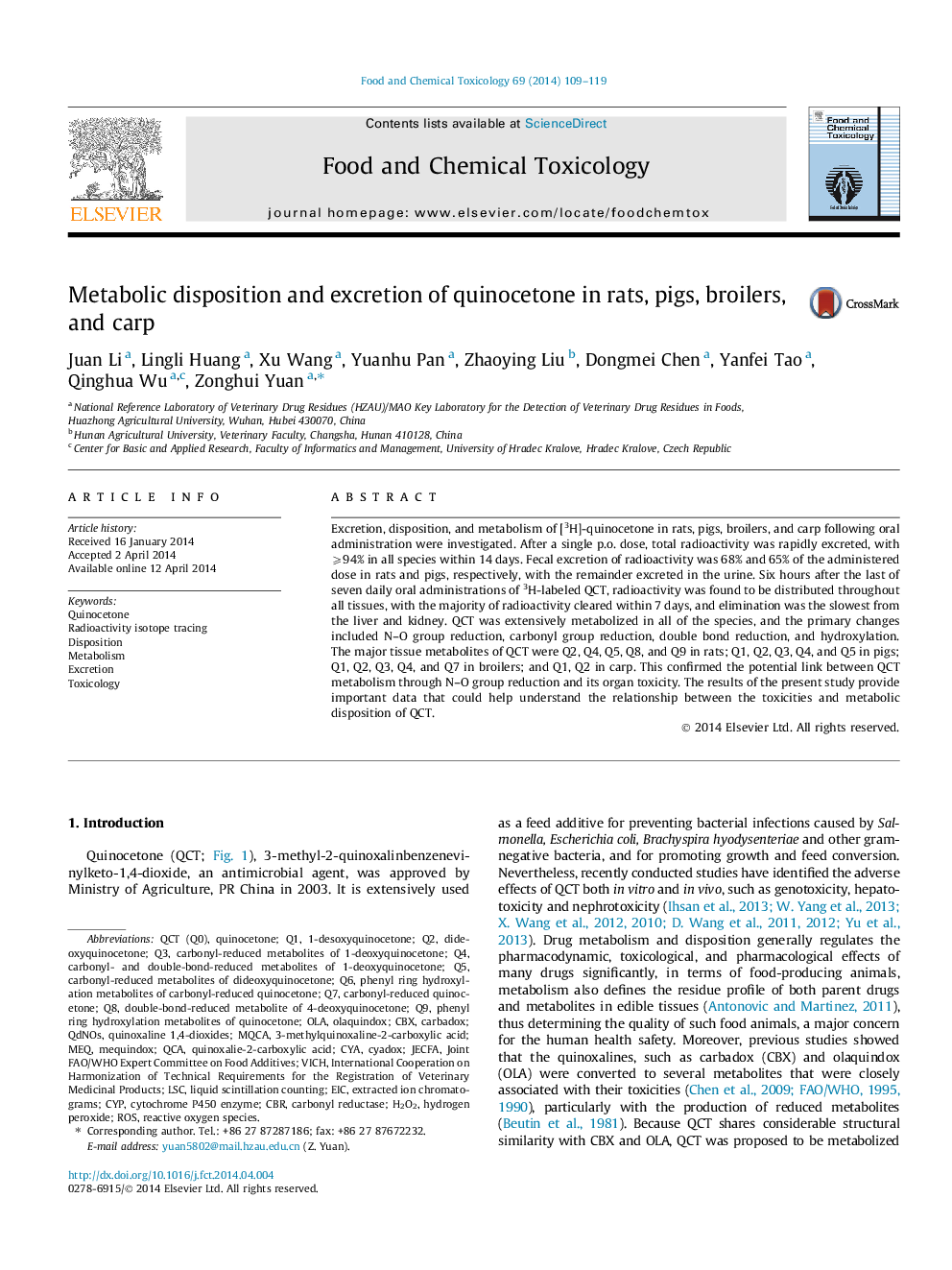| Article ID | Journal | Published Year | Pages | File Type |
|---|---|---|---|---|
| 5850248 | Food and Chemical Toxicology | 2014 | 11 Pages |
Abstract
Excretion, disposition, and metabolism of [3H]-quinocetone in rats, pigs, broilers, and carp following oral administration were investigated. After a single p.o. dose, total radioactivity was rapidly excreted, with ⩾94% in all species within 14 days. Fecal excretion of radioactivity was 68% and 65% of the administered dose in rats and pigs, respectively, with the remainder excreted in the urine. Six hours after the last of seven daily oral administrations of 3H-labeled QCT, radioactivity was found to be distributed throughout all tissues, with the majority of radioactivity cleared within 7 days, and elimination was the slowest from the liver and kidney. QCT was extensively metabolized in all of the species, and the primary changes included N-O group reduction, carbonyl group reduction, double bond reduction, and hydroxylation. The major tissue metabolites of QCT were Q2, Q4, Q5, Q8, and Q9 in rats; Q1, Q2, Q3, Q4, and Q5 in pigs; Q1, Q2, Q3, Q4, and Q7 in broilers; and Q1, Q2 in carp. This confirmed the potential link between QCT metabolism through N-O group reduction and its organ toxicity. The results of the present study provide important data that could help understand the relationship between the toxicities and metabolic disposition of QCT.
Keywords
JECFALSCQCAMEQCBRCyACyPVICHQuinocetoneQdNOsCBXROSHydrogen peroxidecytochrome p450 enzymeOlaquindoxExcretionCyadoxToxicologyliquid scintillation countingMetabolismJoint FAO/WHO Expert Committee on Food AdditivesEICMequindoxOLAH2O2DispositionCarbadoxCarbonyl reductaseextracted ion chromatogramsReactive oxygen species
Related Topics
Life Sciences
Agricultural and Biological Sciences
Food Science
Authors
Juan Li, Lingli Huang, Xu Wang, Yuanhu Pan, Zhaoying Liu, Dongmei Chen, Yanfei Tao, Qinghua Wu, Zonghui Yuan,
